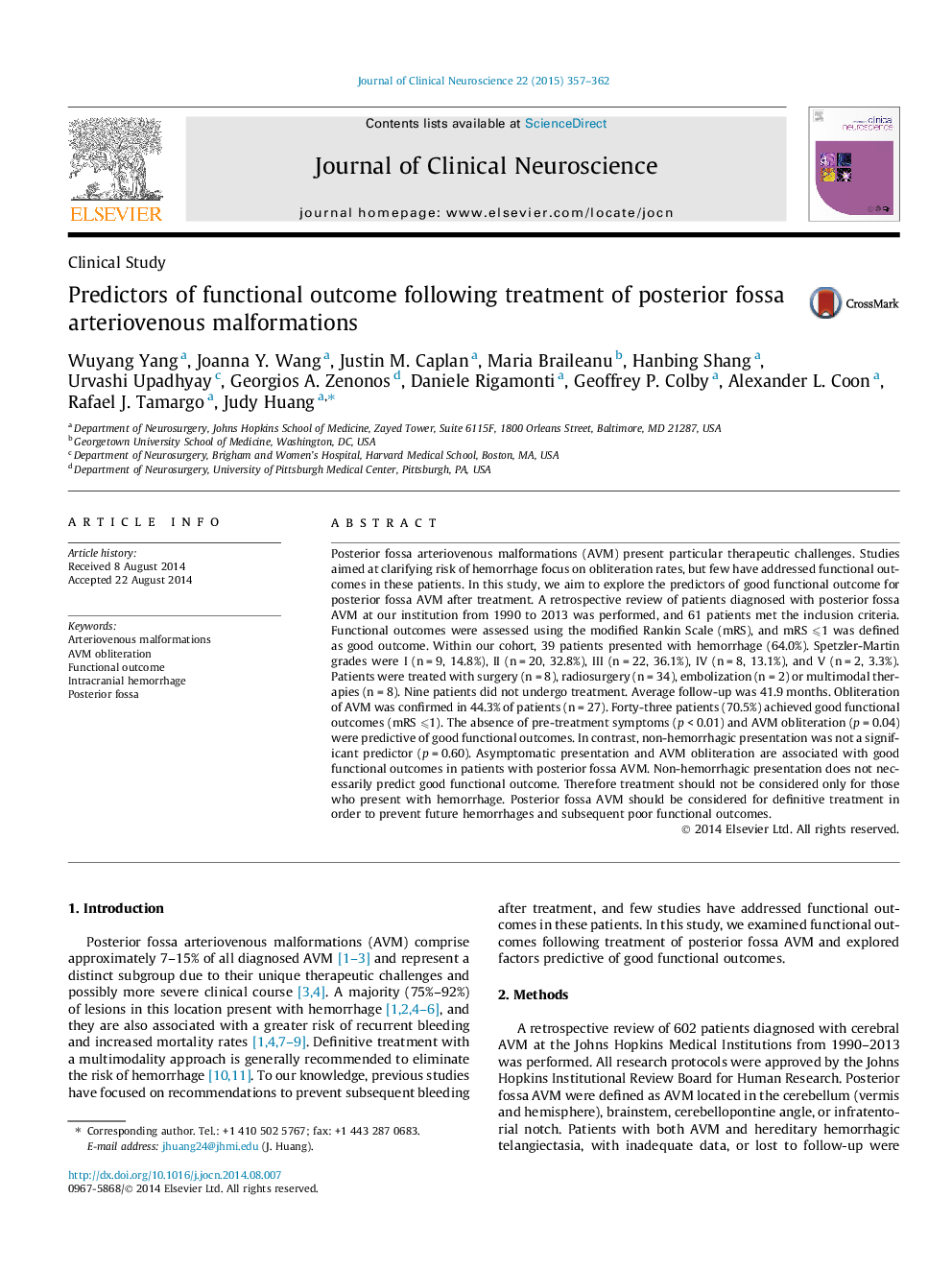| کد مقاله | کد نشریه | سال انتشار | مقاله انگلیسی | نسخه تمام متن |
|---|---|---|---|---|
| 3059561 | 1187429 | 2015 | 6 صفحه PDF | دانلود رایگان |
Posterior fossa arteriovenous malformations (AVM) present particular therapeutic challenges. Studies aimed at clarifying risk of hemorrhage focus on obliteration rates, but few have addressed functional outcomes in these patients. In this study, we aim to explore the predictors of good functional outcome for posterior fossa AVM after treatment. A retrospective review of patients diagnosed with posterior fossa AVM at our institution from 1990 to 2013 was performed, and 61 patients met the inclusion criteria. Functional outcomes were assessed using the modified Rankin Scale (mRS), and mRS ⩽1 was defined as good outcome. Within our cohort, 39 patients presented with hemorrhage (64.0%). Spetzler-Martin grades were I (n = 9, 14.8%), II (n = 20, 32.8%), III (n = 22, 36.1%), IV (n = 8, 13.1%), and V (n = 2, 3.3%). Patients were treated with surgery (n = 8), radiosurgery (n = 34), embolization (n = 2) or multimodal therapies (n = 8). Nine patients did not undergo treatment. Average follow-up was 41.9 months. Obliteration of AVM was confirmed in 44.3% of patients (n = 27). Forty-three patients (70.5%) achieved good functional outcomes (mRS ⩽1). The absence of pre-treatment symptoms (p < 0.01) and AVM obliteration (p = 0.04) were predictive of good functional outcomes. In contrast, non-hemorrhagic presentation was not a significant predictor (p = 0.60). Asymptomatic presentation and AVM obliteration are associated with good functional outcomes in patients with posterior fossa AVM. Non-hemorrhagic presentation does not necessarily predict good functional outcome. Therefore treatment should not be considered only for those who present with hemorrhage. Posterior fossa AVM should be considered for definitive treatment in order to prevent future hemorrhages and subsequent poor functional outcomes.
Journal: Journal of Clinical Neuroscience - Volume 22, Issue 2, February 2015, Pages 357–362
